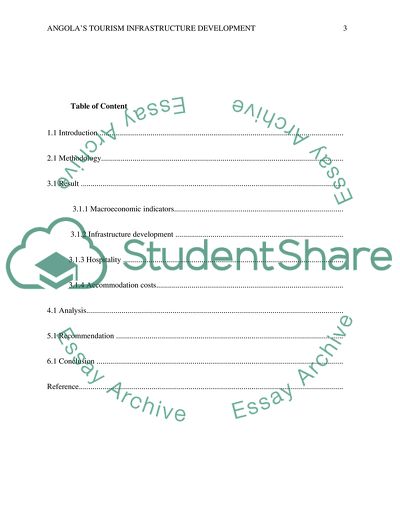Cite this document
(“Angolas Tourism Infrastructure Development Research Paper”, n.d.)
Angolas Tourism Infrastructure Development Research Paper. Retrieved from https://studentshare.org/tourism/1842839-how-angola-an-emerging-country-of-africa-can-succeed-towards-the-future-development-of-their-tourism-infrastructure
Angolas Tourism Infrastructure Development Research Paper. Retrieved from https://studentshare.org/tourism/1842839-how-angola-an-emerging-country-of-africa-can-succeed-towards-the-future-development-of-their-tourism-infrastructure
(Angolas Tourism Infrastructure Development Research Paper)
Angolas Tourism Infrastructure Development Research Paper. https://studentshare.org/tourism/1842839-how-angola-an-emerging-country-of-africa-can-succeed-towards-the-future-development-of-their-tourism-infrastructure.
Angolas Tourism Infrastructure Development Research Paper. https://studentshare.org/tourism/1842839-how-angola-an-emerging-country-of-africa-can-succeed-towards-the-future-development-of-their-tourism-infrastructure.
“Angolas Tourism Infrastructure Development Research Paper”, n.d. https://studentshare.org/tourism/1842839-how-angola-an-emerging-country-of-africa-can-succeed-towards-the-future-development-of-their-tourism-infrastructure.


